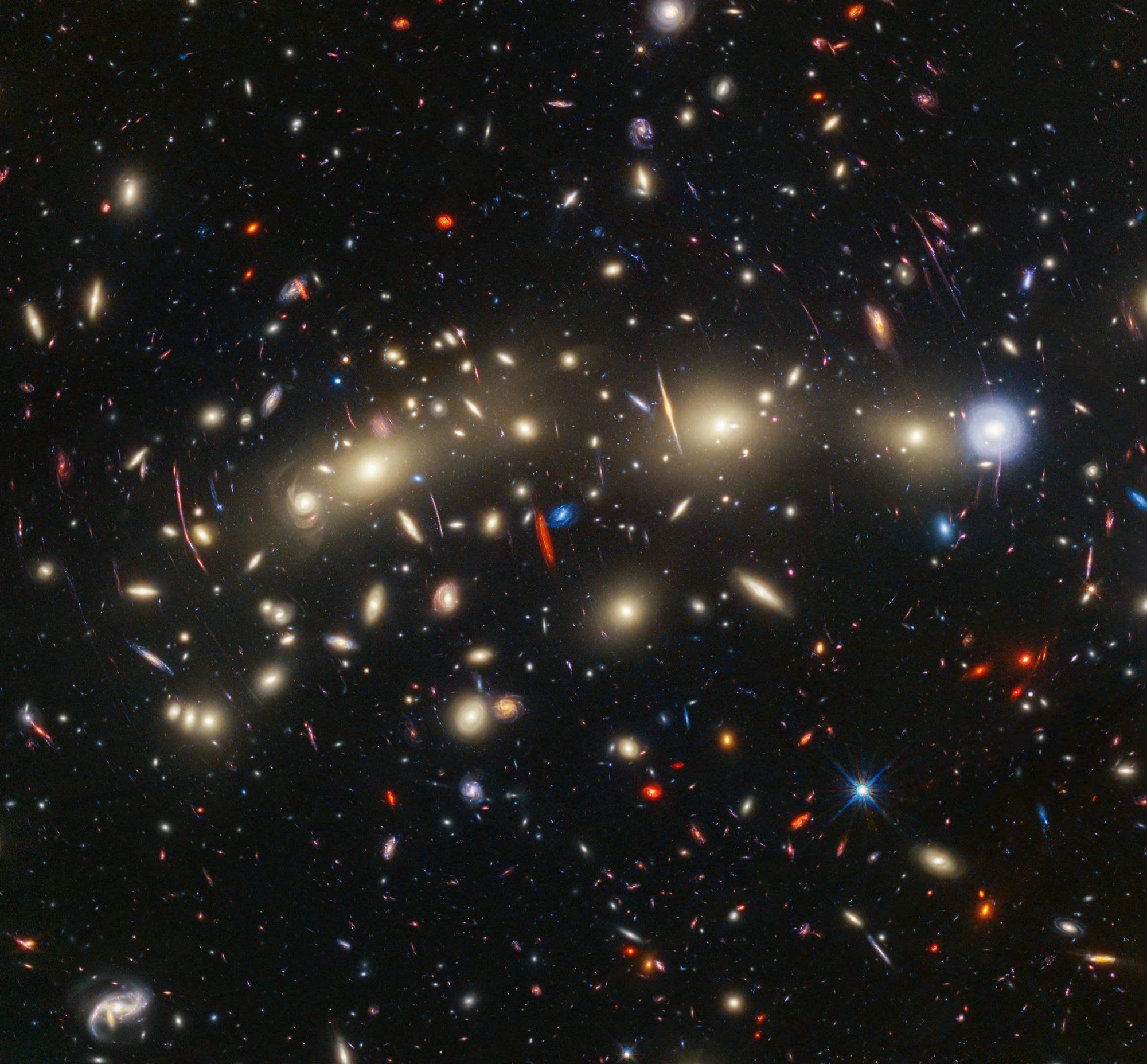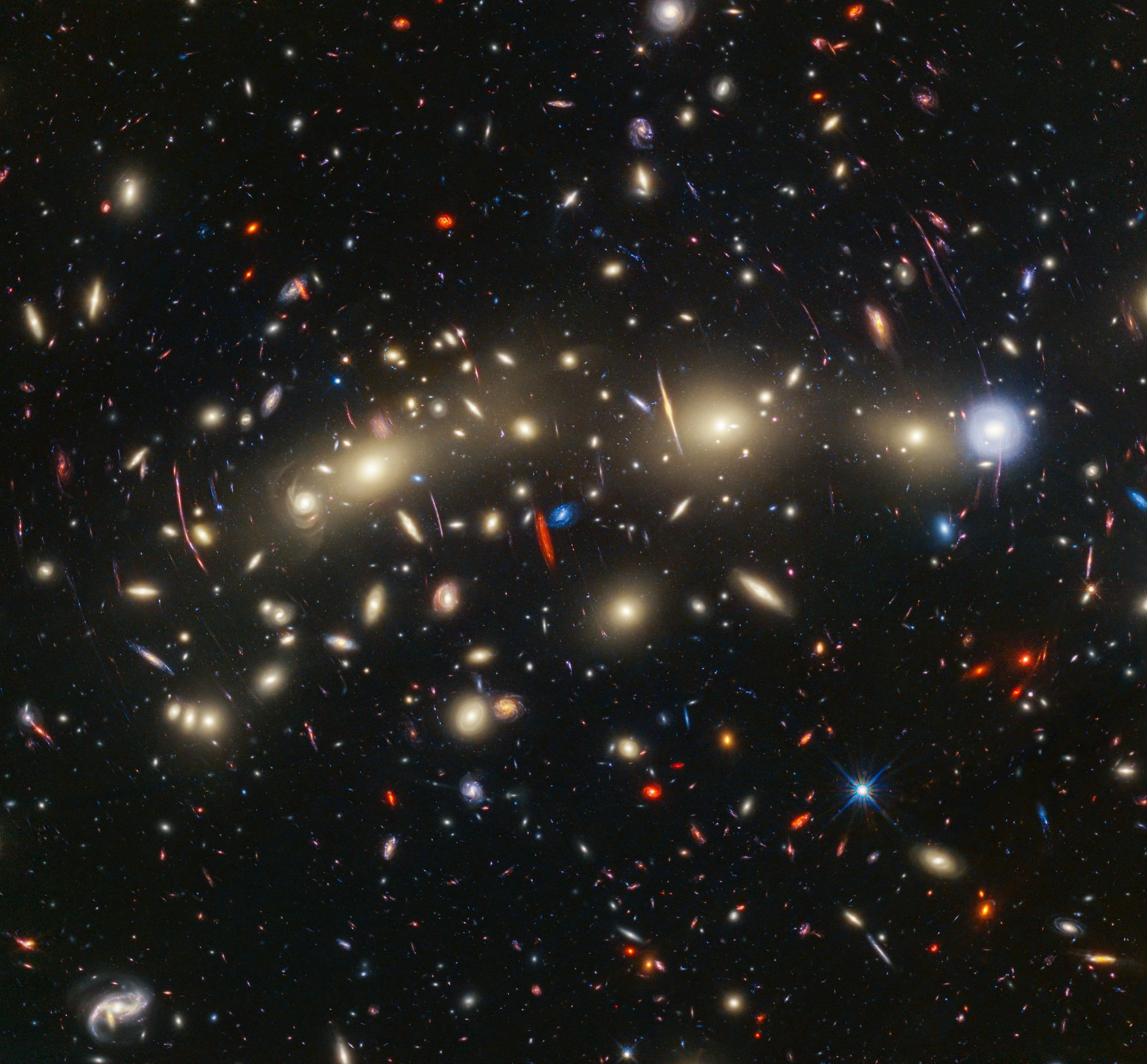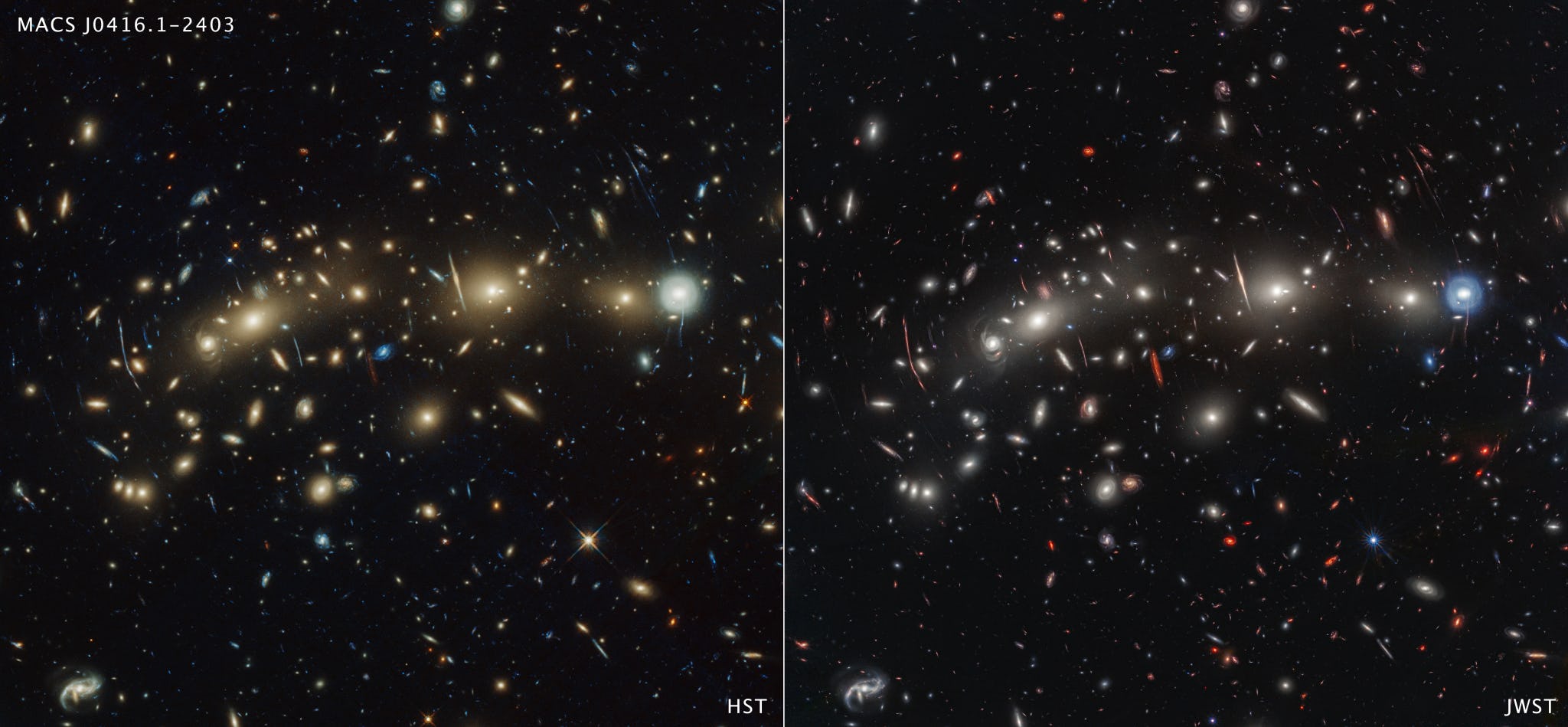
“Monsters” lurk amidst the flickering lights from galaxy cluster MACS0416.
A new image published by NASA and the European Space Agency on Thursday shows a story from a long time ago. MACS0416 is located 4.3 billion light-years away from Earth. To reach the visible-light instrumentation onboard the Hubble Space Telescope and the infrared technology on the James Webb Space Telescope (JWST), its light made quite an odyssey. It began its journey at the tail-end of the formation of the Solar System.
Astronomers are learning more about this region, tucked away in the constellation Eridanus (the River), thanks to the two observatories. “The image reveals a wealth of details that are only possible to capture by combining the power of both space telescopes,” JWST officials wrote in a Thursday image description.

Celestial “Christmas Tree”
Astronomers took this latest view of MACS0416 to hunt for transient objects or things that change in brightness over time.
The galaxy cluster is packed with enough of these flickers to earn a special nickname.
“We’re calling MACS0416 the Christmas Tree Galaxy Cluster, both because it’s so colorful and because of these flickering lights we find within it,” Haojing Yan, associate professor at the University of Missouri and lead author of a paper accepted for publication in The Astrophysical Journal, said in NASA’s announcement.
The body of this imaginary tree is made of two colliding galaxy clusters that will eventually form one heftier object. The soft glow throughout the center of the image acts like a trunk of sorts. According to Hubble officials in 2018, this light comes from stars scattered throughout the hodgepodge cluster, pulled out of the galaxies they once called home.

The tree’s ornaments are varied and abundant. Thanks to a phenomenon called gravitational lensing, the light from distant galaxies gets magnified. Although they are located much farther away than MACS0416, the lensing makes their light appear and spruces up the holiday visuals.
There’s a “Monster”
One distant ornament stands out. Incredibly, it's not a galaxy but something even smaller: a clutch of stars. “Among the transients the team identified, one stood out in particular,” NASA officials wrote in their Thursday announcement.
The stars, magnified by a factor of at least 4,000, come from an ancient place in space where light is just now reaching the telescopes. These stars are from just 3 billion years after the Big Bang when the universe was about a quarter of its current age.
This archaic visual behemoth received quite a name. “The team nicknamed the star system ‘Mothra’ in a nod to its ‘monster nature,’ being both extremely bright and extremely magnified,” NASA officials wrote. They added that Mothra “joins another lensed star the researchers previously identified that they nicknamed ‘Godzilla’” because both are names of giant monsters in Japanese cinema.

Mothra is one of 14 transient objects across this field of view. Remarkably, two of these very highly magnified objects are supernovas, explosions of stars visible to astronomers from exceptionally distant places.
With blues indicating relatively nearby galaxies and reds showing dusty places or distant galaxies, this visual cornucopia provides plenty of science to celebrate.







